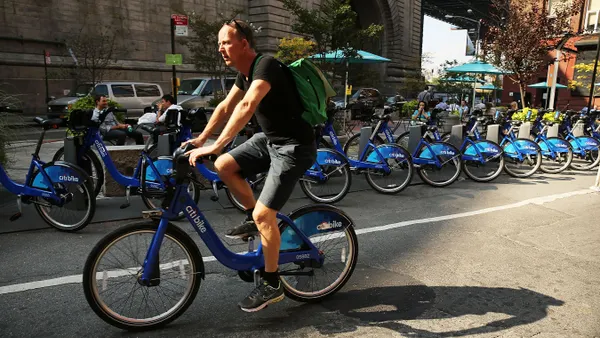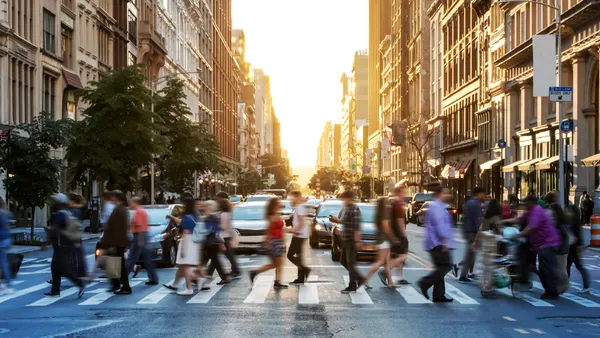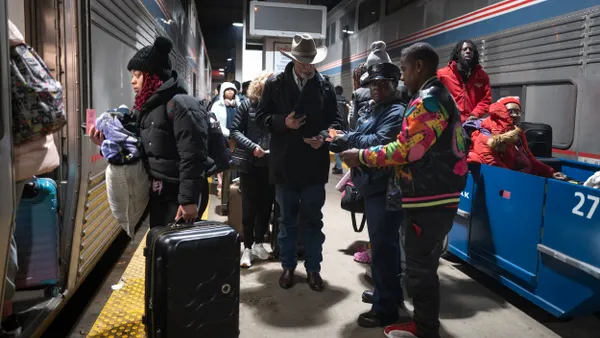Dive Brief:
- A study published in Science Advances examined ride-hailing companies operating in San Francisco and concluded they not only increase traffic congestion, but they present "the biggest contributor to growing traffic congestion in San Francisco." It found that between ride-hailing's infancy in 2010 and its mainstream establishment in 2016, weekday traffic delays increased 62%.
- In addition to the volume of vehicles on the road, the study notes that ride-hailing behaviors contribute to congestion. Dead-heading, or vehicles moving without any passengers inside while looking for the next fare, plays a large role, and "vehicles stopping at the curb to pick up or drop off passengers have a notable disruptive effect on traffic flow, especially on major arterials," the report said.
- Researchers highlight that a lack of data from and about ride-hailing companies has made it difficult to effectively analyze their effects on traffic and cities. Therefore, the ride-hailing studies that do exist often come to conflicting conclusions — or do not reach conclusions — about whether or not the practice contributes to congestion.
Dive Insight:
The study concluded not only that ride-hailing contributes to congestion, but also that congestion is growing more than expected. It accounted for outside factors such as construction that was already planned or underway, the growth in truck travel and the 22% growth in visitors to San Francisco from 2010 to 2016.
The results self-report one of the study's shortcomings: It only examines one city, and that city has a dense urban core and a robust transit system. The results might be similar in other cities that have comparable characteristics, but more research is needed to confirm the findings. The study says it should "be repeated elsewhere to understand how the results vary in cities of different sizes and compositions."
Despite that caveat, the results are similar to those in a study released by Schaller Consultants last summer; that has become one of the most widely cited pieces of research about ride-hailing companies' effects on traffic and cities. Like this study, Schaller's concluded that ride-hailing drastically increases traffic in cities and most directly competes with transit, not personal vehicle trips.
Importantly, the Schaller study's methodology of using "published reports and news articles and newly available national travel survey and ride-share trip data" shows researchers' reliance on sources other than raw ride-hailing company data. This study also emphasized the lack of viable data and how it leads to conflicting research results even among studies that use solid methodology.
While in some cases ride-hailing companies are sharing more data than they have in the past — and cities including Chicago are publishing it on their open-data portals — gaps still remain. San Francisco famously has battled with ride-hailing companies about data-sharing and demanded data such as how many of their vehicles are on the road. The city has found ways to penalize the companies for not sharing data and also subpoenaed them for information on driver pay. Finding a way to gather and analyze more of this type of data would lead to better conclusions on ride-hailing's impact on cities of all sizes.










